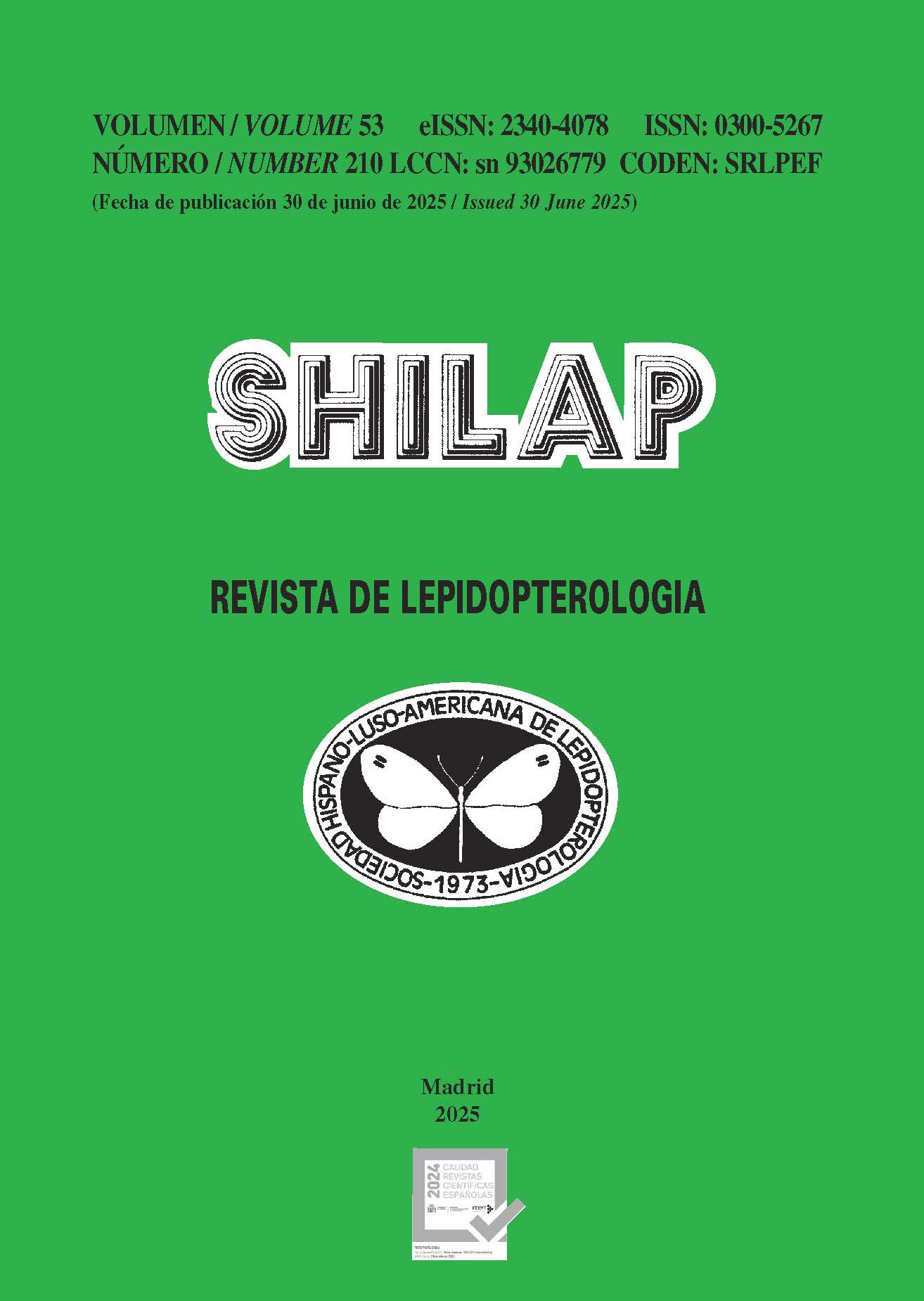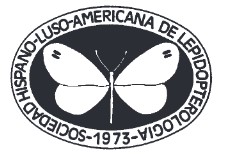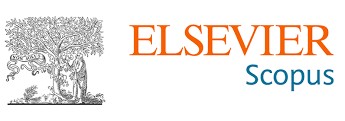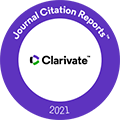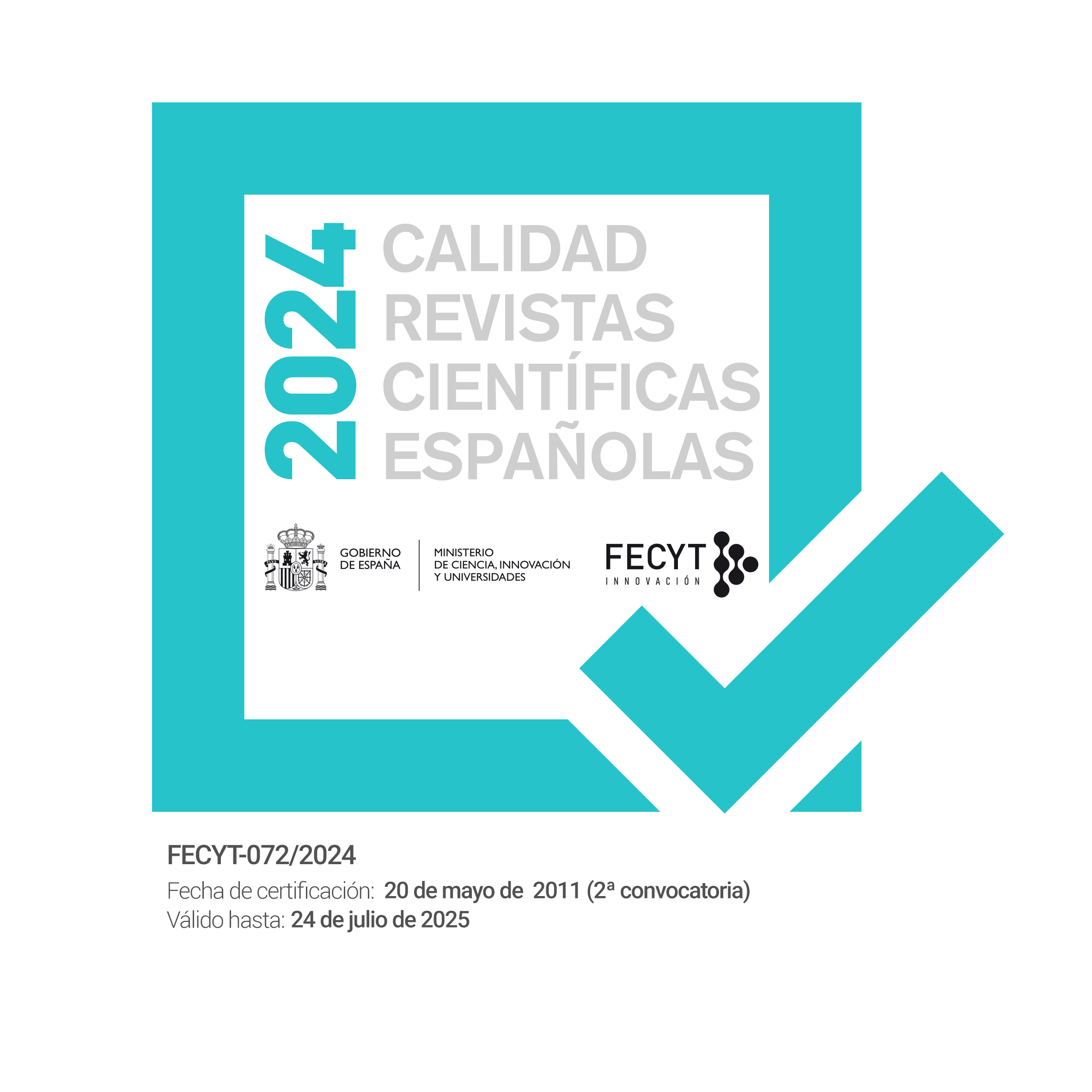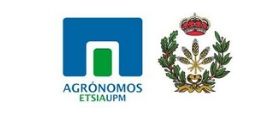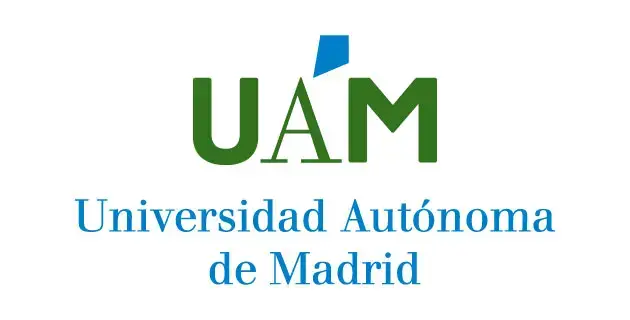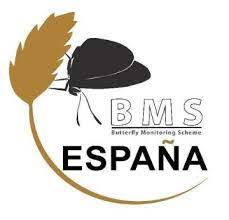Una lista preliminar de la fauna de Papilionoidea del Tehsil Bani, Jammu y Cachemira, India (Insecta: Lepidoptera)
DOI:
https://doi.org/10.57065/shilap.1051Palabras clave:
Insecta, Lepidoptera, Papilionoidea, conservación plantas nutricias, Santuario de Vida Silvestre de Bani, Kathua, Jammu y Cachemira, IndiaResumen
Se llevó a cabo un examen de la diversidad de Papilionoidea en el Tehsil Bani, incluido el recientemente establecido Santuario de Vida Silvestre Bani, durante cinco años y medio, desde marzo de 2014 hasta septiembre de 2019. Este estudio reveló una diversa fauna de especies dentro de estos deficientes datos de Tehsil y el santuario de vida silvestre. Un estudio de cinco años y medio reveló la presencia de 219 especies de seis familias que incluyen 26 especies incluidas en el estado de conservación de la vida silvestre en la India según el WLP, Ley 1972 (Enmienda 2022). Estas especies se documentaron en 40 familias de plantas hospedadoras y en más de 73 especies. La mayoría de ellas se documentaron en familias de plantas huésped, siendo Fabaceae (25) and Poaceae (19 especies) las más prevalentes, seguidas de Malvaceae (9), Rutaceae (8), Acanthaceae (7), Rhamnaceae (6), Brassicaceae (5), Cannabaceae (5) y Apocynaceae (5) y las 31 familias adicionales albergan menos de cinco especies. Sin embargo, se
dispone de información sobre plantas hospedadoras para 140 especies (64 %), pero 79 especies (36 %) se registraron sin información sobre plantas hospedadoras en Jammu y Cachemira. Además de los datos sobre plantas hospedadoras, también se ha incorporado una referencia bibliográfica completa que representa la literatura publicada anteriormente sobre la fauna de Papilionoidea de Jammu y Cachemira para aumentar la exhaustividad de la lista de control.
Descargas
Estadísticas globales ℹ️
|
814
Visualizaciones
|
150
Descargas
|
|
964
Total
|
|
Citas
Anonymous. (2022). The Wildlife (Protection) Amendment Act, 2022.
Antram, C. B. (1924). Butterflies of India. Calcutta & Simla, Thacker, Spink & co.
Balasubramanian, A. (2017). Biodiversity profile of India. Report submitted to Centre for Advanced Studies in Earth Science University of Mysore. Mysore 11.
Basu, D. N., Churi, P., Soman, A., Sengupta, A., Bhakare, M., Lokhande, S., Bhoite, S., Huertas, B., & Kunte, K. (2019). The genus Tarucus Moore, [1881] (Lepidoptera: Lycaenidae) in the Indian Subcontinent. Tropical Lepidoptera Research, 29(2), 87-110.
Bingham, C. T. (1905). Butterflies. (Nymphalidae, Nemeobidae). In The Fauna of British India, including Ceylon and Burma. Taylor and Francis. https://doi.org/10.5962/bhl.title.100748 DOI: https://doi.org/10.5962/bhl.title.100748
Bingham, C. T. (1907). Butterflies. (Papilionidae, Pieridae, Lycaenidae, Hesperidae). In: The Fauna of British India, including Ceylon and Burma (Vol. 2). Taylor and Francis.
Blanchard, C. E. (1841-1844). Les Insectes dans le Voyage dans l’Inde par Victor. Jacquemont. Paris.
Bollow, C. (1930-1931). Lycaenidae: Virachola, Polyommatus, Zizera, Chilades, Everes. Lycaena, Cyaniris, Taraca. In A. Seitz. Die Gross-Schmetterlinge der Erde. Die Palscarktischen Tagfalter. Supplement (Vol. 1). Alfred Kernen Verlag.
Bozano, G. C. (1999). Satyridae. Part L. Subfamily Elymniinae, Tribe Lethini: Lasiommata, Pararge, Lopinga Kirinia, Chonala, Tatinga, Rhaphicera, Ninguta, Neope, Lethe, Neorina. In G. C. Bozano (Editor). Guide to the Butterflies of the Palearctic Region. Omnes Artes.
D’Abrera, B. (1990). Butterflies of the Holarctic region. Part I (Papilionidae, Pieridae, Danaidae & Satyridae (partim). Hill house.
D’Abrera, B. (1992). Butterflies of the Holarctic region. Part II Satyridae (concl.), Nymphalidae (partim). Hill house,
D’Abrera, B. (1993). Butterflies of the Holarctic region. Part III, Nymphalidae (concl.), Libytheidae, Riodinidae & Lycaenidae. Hill house.
Dar, A. A., Jamal, K., Shah, M. S., Ali, M., Sayed, S., Gaber, A., Kesba, H., & Salah, M. (2022a). Species richness, abundance, distributional pattern, and trait composition of butterfly assemblage change along an altitudinal gradient in the Gulmarg region of Jammu and Kashmir, India. Saudi. Journal of Biological Sciences, 29(4), 2262-2269. https://doi.org/10.1016/j.sjbs.2021.11.066 PMid:35531189 PMCid:PMC9073030 DOI: https://doi.org/10.1016/j.sjbs.2021.11.066
Dar, A. A., Shah, M. S., & Jamal, K. (2022b). Butterfly (Lepidoptera: Heterocera) Fauna of Bangus Valley, Jammu and Kashmir, India. Entomological News, 130(3), 308-317. https://doi.org/10.3157/021.130.0311 DOI: https://doi.org/10.3157/021.130.0311
Das, G. N., Fric, Z. F., Panthee, S., Irungbam, J. S., & Konvicka, M. (2023). Geography of Indian butterflies: Patterns revealed by checklists of federal states. Insects, 14(6), 549. https://doi.org/10.3390/insects14060549 DOI: https://doi.org/10.3390/insects14060549
de Niceville, L. (1886). Nymphalidae. Nymphalinae, Lemoniidae, Libythaeinae, Nemeobiinae. In The Butterflies of India, Burmah, and Ceylon. A descriptive handbook of all the known species of rhopalocerous Lepidoptera inhabiting that region, with notice of allied species occuring in the neighbouring countries along the border; with numerous illustrations. Printed and published by the Calcutta central press.
de Niceville, L. (1890). Lycaenidae. In The Butterflies of India, Burmah, and Ceylon. A descriptive handbook of all the known species of rhopalocerous Lepidoptera inhabiting that region, with notice of allied species occuring in the neighbouring countries along the border; with numerous illustrations. Printed and published by the Calcutta central press.
Evans, W H. (1927). The identification of Indian Butterflies. Diocesan Press.
Evans, W. H. (1924). The identification of Indian butterflies. Part V. Journal of the Bombay Natural History Society, 30(1), 72-96.
Evans, W. H. (1925). The identification of Indian butterflies. Part Vl. Journal of the Bombay Natural History Society, 30(2), 322-351.
Evans, W. H. (1932) The identification of Indian Butterflies. (Second edition revised) Journal of the Bombay Natural History Society.
Evans, W. H. (1949). A catalogue of the Hesperiidae from Europe, Asia, and Australia in the British Museum (Natural History). The Trustees of the British Museum. https://doi.org/10.5962/bhl.title.105941 DOI: https://doi.org/10.5962/bhl.title.105941
Evans, W. H. (1955). A revision of the genus Tarucus (Lepidoptera: Lycaenidae) of Europe, North Africa, and Asia. Entomologist. 88, 179-187.
Evans, W. H. (1912). A List of Indian Butterflies (continued). Journal of the Bombay Natural History Society, 21(3), 969-1008
Farooq, M., Rather, M. A., Sheikh, B. A., & Wagay, S. A. (2021). Wildlife Protected Area Network Atlas of J&K. Associated media.
Ford, E. B. (1924). The geographical races of Heodes phlaeas L. Transactions of the Entomological Society of London, 71(3/4), 692-743. (1923)
Forster, W. (1980). Einige neue Tagfalterformen aus Nepal (Lepidoptera: Rhopalocera). Spixiana, 3(1), 1-9.
Fruhstorfer, H. (1910a). Appias Hbn; Gonepteryx Leach; Colias F.; Terias Swains.; Teraclous Swains. In A. Seitz. Die Groâ-Schmetterlinge der Erde. Die Indo- Australische Tagfalter (Vol. 9). Lehmann Vrlg.
Fruhstorfer, H. (1911). Ypthima Hbn.; Callerebia Btlr.; Coenonympha Hbn.; Maniola Schrank; Karanasa Moore; Eumenis Hbn.; Aulocera Btlr.; Satyrus Latr.; Lethe Hbn.; In A. Seitz. Die Groß-Schmetterlinge der Erde. Die Indo-Australische Tagfalter (Vol. 9). Lehmann Vrlg.
Fruhstorfer, H. (1912). Melitaea F.; Boloria Moore; Argynnis F.; Precis Hbn.; Vanessa F.; Polygonia Hbn.; Kallima Dbl.; Stibochiona Btlr.; Neptis F.; Limenitis F.; Euthalia Hbn.; Apatura F. In A. Seitz. Die Groâ-Schmetterlinge der Erde. Die Indo-Australische Tagfalter (Vol. 9). Lehmann Vrlg.
Fruhstorfer, H. (1914). Libythea F.; Abisara Fldr. In A. Seitz. Die Groß-Schmetterlinge der Erde. Die Indo-Australische Tagfalter (Vol. 9). Lehmann Vrlg.
Garlani, L. (2024). Butterflies of Himachal Pradesh-Annotated Checklist. Published by the Author.
Gasse, P. V. (2018). Butterflies of the Indian Sub-Continent - Annoted Checklist. http://www.biodiversityofindia.org/ images/2/2c/Butterflies_of_India.pdf
Gupta, S., & Sheikh, T. (2021). First Record of Spotted Small Flat Sarangesa purendra (Moore, 1882) (Lepidoptera: Hesperiidae) from Union Territory of Jammu and Kashmir, India. Revista Chilena de Entomología, 47(3), 545-548. https://doi.org/10.35249/rche.47.3.21.11 DOI: https://doi.org/10.35249/rche.47.3.21.11
Hanus, E., Hanus. J., & Manon, P. (1988). Notes de chasses au Ladakh et au Cachemire (Lepidoptera Rhopalocera). Alexanor, 15(4), 195-211. (1997)
Hegner, H. (1978). Entomologische eindrücke aus Kaschmir und Ladakh. Nachriten Entomologischer Verein Apollo. Frankfurt/Mam. N. F., 3, 37-43.
Holland, W. J. (1896). List of the Lepidoptera collected in Kashmir by Dr. W. L. Abbot. Proceedings of the United States National Museum, 18(1065), 275-279. https://doi.org/10.5479/si.00963801.18-1065.275 DOI: https://doi.org/10.5479/si.00963801.18-1065.275
Kehimkar, I. (2016). BNHS Field Guides: Butterflies of India. Bombay Natural History Society.
Khan, N. A., & Sheikh, T. (2022). Callerebia hybrida Butler, 1880 (Lepidoptera, Nymphalidae) a new addition to the Butterflies of Union Territory of Jammu and Kashmir, India. Indian Entomologist, 3(2), 39-41.
Kollar, V. (1844). Lepidoptera (Rhopalocera). In V. Kollar & L. Redtenbacher. Aufzahlung und Beschreibung der von Freiherrn Carl v. Hugel auf seiner Reise durch Kaschmir und das Himaleyagebirge gesammelten Insecten. In C. F. Hugel. Kaschmir und des Reichs der Siek. Stuttgart, Hallberger‘sche verlagshandlung, 4(2), 393-564, 582-585.
Kollar, V. (1848). Lepidoptera (Rhopalocera). In V. Kollar & L. Redtenbacher. Aufzahlung und Beschreibung der von Freiherrn Carl v. Hugel auf seiner Reise durch Kaschmir und das Himaleyagebirge gesammelten Insecten. In C. F. Hugel. Kaschmir und des Reichs der Siek. Stuttgart, Hallberger’sche verlagshandlung, 4(2), 397-398, 403-496.
Kunte, K., Sondhi, S., & Roy, P. (2024). Butterflies of India, v. 4.21. Indian Foundation for Butterflies. https://www.ifoundbutterflies.org.
Lang, A. M. (1868). Notes on Lepidoptera from “Goolmurg” in Cashmere. Entomologist’s Monthly Magazine, 5, 33-37.
Leech. J. H. (1892-1894) Butterflies from China, Japan, and Corea. Taylor & Francis. https://doi.org/10.5962/bhl.title.86314 DOI: https://doi.org/10.5962/bhl.title.86314
Mabille, P. (1909). Hesperidae. In A. Seitz. Die Groâ-Schmetterlinge der erde. Die Groâschmetterlinge des Palaearktischen Faunengebietes. Die Palaearktischen Tagfalter (Vol. 1). Lehmann Vrlg.
Mani, M. S. (1986). Butterflies of the Himalaya. Series Entomologica, 36, x+181.
Marshall, G. F. L., & de Niceville, L. (1883). Nymphalidae. Satyrinae, Elymniinae, Morphinae, Acraeinae. In The Butterflies of India, Burmah, and Ceylon. A descriptive handbook of all the known species of rhopalocerous Lepidoptera inhabiting that region, with notices of allied species occuring in the neighbouring countries along the border, with numerous illustrations. Printed and published by the Calcutta central press CO. LD. https://doi.org/10.5962/bhl.title.10618 DOI: https://doi.org/10.5962/bhl.title.10618
Mitis, H. R. V. (1893). Revision des Pieriden. Genus Delias. Deutsche entomologische Zeitschrift Iris, 6(1), 97-144.
Moore, F. (1874). List of Diurnal Lepidoptera collected in Cashmere Territory by Capt. R. B. Reed, 12th Regt. with Descriptions of new Species. Proceedings of the Zoological Society of London, 1874(4), 264-274. https://doi.org/10.1111/j.1096-3642.1874.tb02482.x DOI: https://doi.org/10.1111/j.1096-3642.1874.tb02482.x
Moore, F. (1872) Descriptions of New Indian Lepidoptera. Proceedings of the Zoological Society of London, 1872, 555-566.
Moore, F. (1875). Descriptions of New Asiatic Lepidoptera. Proceedings of the Zoological Society of London, 1874(4), 565-579. https://doi.org/10.1111/j.1096-3642.1874.tb02511.x DOI: https://doi.org/10.1111/j.1096-3642.1874.tb02511.x
Moore, F. (1890-1892). Rhopalocera. Family Nymphalidae. Subfamilies Euploeinae and Satyrinae. Lepidoptera Indica (Vol. 1). Lovell Reeve & Co. https://doi.org/10.5962/bhl.title.8763 DOI: https://doi.org/10.5962/bhl.title.8763
Moore, F. (1899-1900). Rhopalocera. Family Nymphalidae. Sub-Family Nymphalinae (continued), Groups Limenitina, Nymphalina, and Argynnina. Lepidoptera Indica (Vol. 4). Lovell Reeve & Co.
Moore, F. (1901-1903). Rhopalocera. Family Nymphalidae. Sub-Family Nymphalinae (continued), Groups Melitaeina and Eurytelina. Sub-Families Acraeinae, Pseudergolinae, Calinaginae, and Libytheinae. Family Riodinidae. Sub-Family Nemeobiinae. Family Papilionidae. Sub-Families Parnassiinaae, Thaidinae, Leptocircinae, and Paplioninae. Lepidoptera lndica (Vol. 5). L. Reeve & Co.
Moore, F. (1905-1909). Rhopalocera. Family Papilionidae, Sub-family Pierinae. Lepidoptera Indica (Vol. 7). Lovell Reeve & Co.
Myers, N., Mittermeier, R. A., Mittermeier, C. G., da Fonseca, G. A. B., & Kent, J. (2000). Biodiversity hotspots for conservation priorities. Nature, 403(6772), 853-858. https://doi.org/10.1038/35002501 PMid:10706275 DOI: https://doi.org/10.1038/35002501
Oberthür, C. H. (1891). Lépidoptéres du genre Parnassius. Etudes entomologiques (Vol. 14) C. H. Oberthür print.
Parey, S. H., & Sheikh, T. (2021). Butterflies of Pirpanjal Range of Kashmir Himalaya. Corvette Press.
Peile, H. D. (1937). A guide to collecting butterflies of India. Staples presslimited.
Qureshi, A. A., Bhagat, R. C., & Bhat, D. M. (2014). Diversity of butterflies (Lepidoptera: Papilionoidea and Hesperoidea) of Dachigam National Park, Jammu and Kashmir, India. Journal of Threatened Taxa, 6(1), 5389-5392. https://doi.org/10.11609/JoTT.o2886.5389-92 DOI: https://doi.org/10.11609/JoTT.o2886.5389-92
Qureshi, A. A., Bhagat, R. C., & Pathania, P. C. (2013a). Rhopalocera Diversity (Lepidoptera) of District Kupwara from Jammu and Kashmir State (India). Biological Forum, 5(1), 100-106.
Qureshi, A. A., Dar, R. A., Tahir, S. I., & Bhagat. R. C. (2013b). Butterfly-fauna of Gulmarg, Kashmir, J&K State. IOSR Journal of Agriculture and Vetrinary Sciences, 2(5), 40-45. https://doi.org/10.9790/2380-0254045 DOI: https://doi.org/10.9790/2380-0254045
Riley, N. D. (1929). Revisional notes on the genus Heliophorus (Lycaenidae) with description of new forms. Journal of Bombay Natural History Society, 33(2), 384-402.
Rober, J. (1907). Pieridae. In A. Seitz. Die Groâ-Schmetterlinge der erde. Die Groâschmetterlinge des Palaearktischen Faunengebietes. Die Palaearktischen Tagfalter (Vol. 1). Lehmann Verlg.
Roberts, T. J. (2001). The butterflies of Pakistan. Oxford university press.
Rodgers, W. A., Panwar, H. S., & Mathur, V. B. (2000). Wildlife Protected Area Network in India: A review. Wildlife Institute of India.
Ruhl, F. (1892-1893) (Tagfalter). Die Palaearktischen Grossschmetterlinge und ihre Narurgeschichte. E. Heyne.
Sakai, S. (2015). New Butterflies from Hindu Kush, Kashmir, Ladakh and Tibet. Pallarge, 9, 1-27.
Sakai, S., Inaoka, S., Aoki, T., Yamaguchi, S., & Watanabe, Y. (2002). The Panassiology. The Parnassius butterflies. A study in evolution. Kodansha. (In Japanese)
Seitz, A. (1907a). Danaidae. In A. Seitz. Die Groâ-Schmetterlinge der Erde. Die Großschmetterlinge des Palacarktischen Faunengebietes. Die palacarktischen Tagfalter (Vol. 1). Lehmann Vrlg. https://doi.org/10.5962/bhl.title.149310
Seitz, A. (1907b). Satyridae: Acrophthalmia, Ragadia, Mandarinia, Mycalesis, Lethe, Zophoessa, Rhaphicera, Melanitis, Neorina, Neope, Ypthima, Callerebia. In A. Seitz. Die Groâ-Schmetterlinge der Erde. Die Großschmetterlinge des Palacarktischen Faunengebietes. Die palacarktischen Tagfalter (Vol. 1). Lehmann Vrlg. https://doi.org/10.5962/bhl.title.149310
Seitz, A. (1908a) Satyridae: Oeneis, Satyrus, Callarge, Pararge, Aphantopus, Epinephele, Coenonympha. Triphysa. Paleonympha. In A. Seitz. Die Groâ-Schmetterlinge der Erde. Die Großschmetterlinge des Palacarktischen Faunengebietes. Die palacarktischen Tagfalter (Vol. 1). Lehmann Vrlg. https://doi.org/10.5962/bhl.title.149310
Seitz, A. (1908b). Argynnidi, Heliconidi, Acraeidi. In A. Seitz. Die Groß-Schmetterlinge der Erde. Die Großschmetterlinge des Palacarktischen Faunengebietes. Die palaearktischen Tagfalter (Vol. 1). Lehmann Vrlg. https://doi.org/10.5962/bhl.title.149310
Seitz, A. (1908c). Erycinidae, Lycaenidae. In A. Seitz. Die Groß-Schmetterlinge der Erde. Die Großschmetterlinge des Palaearktischen Faunengebietes. Die palacarktischen Tagfalter (Vol. 1). Lehmann Vrlg. DOI: https://doi.org/10.5962/bhl.title.149310
Seitz, A. (1909) Lycaenidae. In A. Seitz. Die Groß-Schmetterlinge der Erde. Die Großschmetterlinge des Palacarktischen Faunengebietes. Die palacarktischen Tagfalter (Vol. 1). Lehmann Vrlg.
Seitz, A. (1923). Catochrysops Bsd.; Everes Hbn.; Lycaena F. Chrysophanus Hbn.; Illerda Dbl. In A. Seitz. Die Große Schmetterlinge der Erde. Die Indo-Australische Tagtalter (Vol. 9). Lehmann Vrlg.
Seitz, A. (1926). Apharitis Riley; Thecla F.; Euaspa Mr. In A. Seitz. Die Große Schmetterlinge der Erde. Die Indo-Australische Tagtalter (Vol. 9). Lehmann Vrlg.
Sharma, S., & Sharma, N. (2018b). New Nymphalid buterfy records from Jammu and Kashmir. Journal of Threatened Taxa, 10(11), 12602-12606; https://doi.org/10.11609/jott.3874.10.11.12602-12606 DOI: https://doi.org/10.11609/jott.3874.10.11.12602-12606
Sharma, S., & Sharma, N. (2020). On the rediscovery and new additions of Skippers (Lepidoptera: Paplionoidea: Hesperiidae) from Jammu and Kashmir, India. Revista Chilena de Entomologia, 46(4), 591-599. https://doi.org/10.35249/rche.46.4.20.05 DOI: https://doi.org/10.35249/rche.46.4.20.05
Sharma, S., & Sharma, N. (2017). New butterfly records from the Jammu Shiwaliks in Jammu and Kashmir. Journal of Threatened Taxa, 9(10), 10856-10859. https://doi.org/10.11609/jott.3180.9.10.10856-10859 DOI: https://doi.org/10.11609/jott.3180.9.10.10856-10859
Sharma, S., & Sharma, N. (2018a). New Lycaenid butterfly records from Jammu and Kashmir. Journal of Threatened Taxa, 10(7), 11984-11987. https://doi.org/10.11609/jott.4046.10.7.11984-11987 DOI: https://doi.org/10.11609/jott.4046.10.7.11984-11987
Sheikh, T. (2018). Butterflies of Environmental Park, Raika & Neighbourhood. Department of Ecology Environment & Remote Sensing, Govt. of Jammu and Kashmir, Jammu.
Sheikh, T., & Hassan, M. A. (2023a). Confirmation of the presence of Hestina persimilis zella Butler, 1869 from Union Territory of Jammu and Kashmir, India after 110 years (Lepidoptera: Nymphalidae). SHILAP Revista de lepidopterología, 51(202), 367-373. https://doi.org/10.57065/shilap.471 DOI: https://doi.org/10.57065/shilap.471
Sheikh, T., & Mishra, S. (2023a). A note on the reconfirmation of tawny mime, Papilio agestor Gray, 1831 (Lepidoptera: Papilionidae) from union territory of Jammu and Kashmir, India after 115 years. Munis Entomology & Zoology, 18(1), 629-633.
Sheikh, T., & Mishra, S. (2023b). First photographic record of Ypthima sakra Moore, 1857-from Jammu and Kashmir Union territory, India (Lepidoptera: Nymphalidae). SHILAP Revista de lepidopterología, 51(201), 55-58. https://doi.org/10.57065/shilap.435 DOI: https://doi.org/10.57065/shilap.435
Sheikh, T., & Parey, S. H. (2019a). Six new records of Butterflies (Lepidoptera: Insecta) from Jammu and Rajouri Districts of Jammu and Kashmir Himalaya. Journal of Wildlife Research, 7(3), 42-46.
Sheikh, T., & Parrey, S. H. (2019b). New records of butterflies (Lepidoptera: Insecta) from Jammu and Kashmir Himalaya. Records of Zoological Survey of India, 119(4), 463-473. DOI: https://doi.org/10.26515/rzsi/v119/i4/2019/144197
Sheikh, T., & Mishra, S. (2022). First report of continental swift Parnara ganga (Evans, 1937) (Lepidoptera: Hesperiidae) from Jammu and Kashmir Union Territory, India. Munis Entomology & Zoology, 17(suplement), 1683-1686.
Sheikh, T., (2022). Addition of Chestnut Angle Odontoptilum angulatum (C. Felder, 1862) to the Butterfly Fauna of Union Territory of Jammu and Kashmir, India. Life Sciences Leaflets, 141, 7-11.
Sheikh, T. & Gupta, S. (2022) Rediscovery of white-bordered copper, Lycaena panava (Westwood, 1852) (Lepidoptera: Lycaenidae) from Union Territory of Jammu and Kashmir, India. Life Sciences Leaflets, 144 (2), 1-5.
Sheikh, T., Awan, M. A., & Parey, S. H. (2021). Checklist of Butterflies (Lepidoptera: Rhopalocera) of Union Territory Jammu and Kashmir, India. Records of Zoological Survey of India 121(1), 127-171. DOI: https://doi.org/10.26515/rzsi/v121/i1/2021/154311
Sheikh., T., & Hassan, M. A. (2023b). Two new records of Rhopalocera from Union Territory of Jammu and Kashmir, India (Insecta: Lepidoptera). SHILAP Revista de lepidopterología, 51(202), 259-262. https://doi.org/10.57065/shilap.460 DOI: https://doi.org/10.57065/shilap.460
Singh, A. P. (2016). Notes on three species of Palaearctic Satyrinae (Lepidoptera: Nymphalidae) from northwestern Himalaya, India. Journal of Threatened Taxa, 8(9), 9208-9215. http://dx.doi.org/10.11609/jott.2458.8.9.9208-9215 DOI: https://doi.org/10.11609/jott.2458.8.9.9208-9215
Singh, P., (2020). Floristic diversity of India: an overview. In G. S. Dar & A. A. Khuroo (Eds.). Biodiversity of the Himalaya: Jammu and Kashmir State. Springer. https://doi.org/10.3390/d12060217 DOI: https://doi.org/10.1007/978-981-32-9174-4_3
Singh, S., & Sheikh, T. (2021). Rediscovery of Popinjay, Stibochiona nicea (Gray, 1846) (Lepidoptera: Nymphalidae: Nymphalinae) from Union Territory of Jammu and Kashmir, India. Revista Chilena de Entomología, 47(3), 497-499. https://doi.org/10.35249/rche.47.3.21.07 DOI: https://doi.org/10.35249/rche.47.3.21.07
Smetacek, P. (2018). A naturalist’s guide to the Butterflies of India, Pakistan, Nepal, Bhutan, Bangladesh, and Sri Lanka. John Beaufoy Publishing.
Smith, C. (1994). Butterflies of Nepal (Revised Edition). Tecpress Service L. P. South, R. (1902). Catalogue of the collection of Palaearctic butterflies formed by late John Henry Leech and presented to the trustees of the British Museum by his mother Mrs. Eliza Leech. The Trustees of the British Museum.
Stichel, H. (1908). Nymphalidae. In A. Seitz. Die Groâ-Schmetterlinge der erde. Die Groâschmetterlinge des Palaearktischen Faunengebietes. Die Palaearktischen Tagfalter (Vol. 1). Lehmann Vrlg.
Swinhoe, C. (1909-1910). Rhopalocera. Family Lycaenidae. Sub-families Geryndinae, Lycaenopsinae and Everninae. Lepidoptera Indica (Vol. 7). L. Reeve & Co.
Swinhoe, C. (1911-1912). Rhopalocera. Family Lycaenidae (Continued) Sub-families Horaginae, Deudorixinae, Hypolycaeninae, Zesiusinae, Aphnaeinae, Biduandinae, Cheritrinae, Loxurinae. Family Hesperidae. Subfamilies Ismeneinae, Achalarinae. Lepidoptera Indica (Voil. 9). Lovell Reeve & Co.
Swinhoe. C. (1910-1911). Rhopalocera. Family Lycaenidae. Sub-Families Lycaeninae, Plebeinae, Lampidinae, Chrysophaninae, Poritiine, Amblypodiinae, Curetinae, Liphyrinæ, Ruralinae. Lepidoptera Indica (Vol. 8). Lovell Reeve & Co.
Talbot, G. (1939). Butterflies (Papilionidae, Pieridae). The Fauna of British India including Ceylon and Burma (Vol. 1). Today and Tomorrow’s Printers and Publishers.
Talbot, G. (1947). Butterflies (Danaidae, Satyridae, Amathusidae, Acraeidae). In: The Fauna of British India
including Ceylon and Burma (Vol. 2). Today and Tomorrow’s Printers and Publishers.
Tshikolovets, V. (2005). The Butterflies of Ladakh. Kyiv-Bruno Publ by the author, pp 1-176.
Tytler, H. C. (1926) Notes on some new and interesting butterflies from India and Burma. Part 1. Journal of the Bombay Natural History Society, 31(2), 248-260.
Upadhye, R., Pertin, M., Smetacek P., & Saito M. (2020). Addition of a butterfly genus and species to the Indian fauna. Bionotes, 22(2), 34-35
Varshney, R. K., & Smetacek, P. (2015). A Synoptic Catalogue of the Butterflies of India. Butterfly Res. centre, Bhi. & Ind. Pub.
Vis, R., & Coene, H. A. (1987). Lepidopterological investigation in Kashmir and Ladakh (India). Nota lepidopterologica, 10(1), 5-24.
Wynter-Blyth, M. A. (1957). Butterflies of the Indian Region. Bombay Natural History Society.
Descargas
Publicado
Cómo citar
Número
Sección
Licencia
Derechos de autor 2025 Tasli Sheikh, Wasim Sajad Malik, Sat Paul Pakhru, Muhammad Asghar Hassan

Esta obra está bajo una licencia internacional Creative Commons Atribución 4.0.
El autor retiene sus derechos de marca y patente sobre cualquier proceso o procedimiento dentro del artículo.
El autor retiene el derecho de compartir, distribuir, ejecutar y comunicar públicamente el artículo publicado en SHILAP Revista de lepidopterología, con reconocimiento inicial de su publicación en SHILAP Revista de lepidopterología.
El autor retiene el derecho para hacer una posterior publicación de su trabajo, de utilizar el artículo a publicarlo en un libro, siempre que indique su publicación inicial en SHILAP Revista de lepidopterología.
Cada envío a SHILAP Revista de lepidopterología debe ir acompañado de una aceptación de los derechos de autor y del reconocimiento de autoría. Al aceptarlos, los autores conservan los derechos de autor de su trabajo y aceptan que el artículo, si es aceptado para su publicación por SHILAP Revista de lepidopterología, tendrá una licencia de uso y distribución “Reconocimiento 4.0 Internacional de Creative Commons” (CC BY 4.0), que permite a terceros compartir y adaptar el contenido para cualquier propósito dando el crédito apropiado al trabajo original.
Puede consultar desde aquí la versión informativa y el texto legal de la licencia. La indicación de la licencia CC BY 4.0 debe indicarse expresamente de esta manera cuando sea necesario.
A partir de 2022, el contenido de la versión impresa y digital se encuentra bajo una licencia de uso y distribución “Reconocimiento 4.0 Internacional de Creative Commons” (CC BY 4.0), que permite a terceros compartir y adaptar el contenido para cualquier propósito dando el crédito apropiado al trabajo original.
El contenido anterior de la revista se publicó bajo una licencia tradicional de derechos de autor; sin embargo, el archivo está disponible para acceso gratuito.
Al usar el contenido de SHILAP Revista de lepidopterología publicado antes del año 2022, incluidas figuras, tablas o cualquier otro material en formato impreso o electrónico pertenecen a los autores de los artículos, los autores deben obtener el permiso del titular de los derechos de autor. Las responsabilidades legales, financieras y penales a este respecto pertenecen al autor(es).
En aplicación del Principio de Prioridad del Código Internacional de Nomenclatura Zoologica, no se autoriza el depósito en repositorios, páginas web personales o similares de cualquier otra versión distinta a la publicada por el editor.
